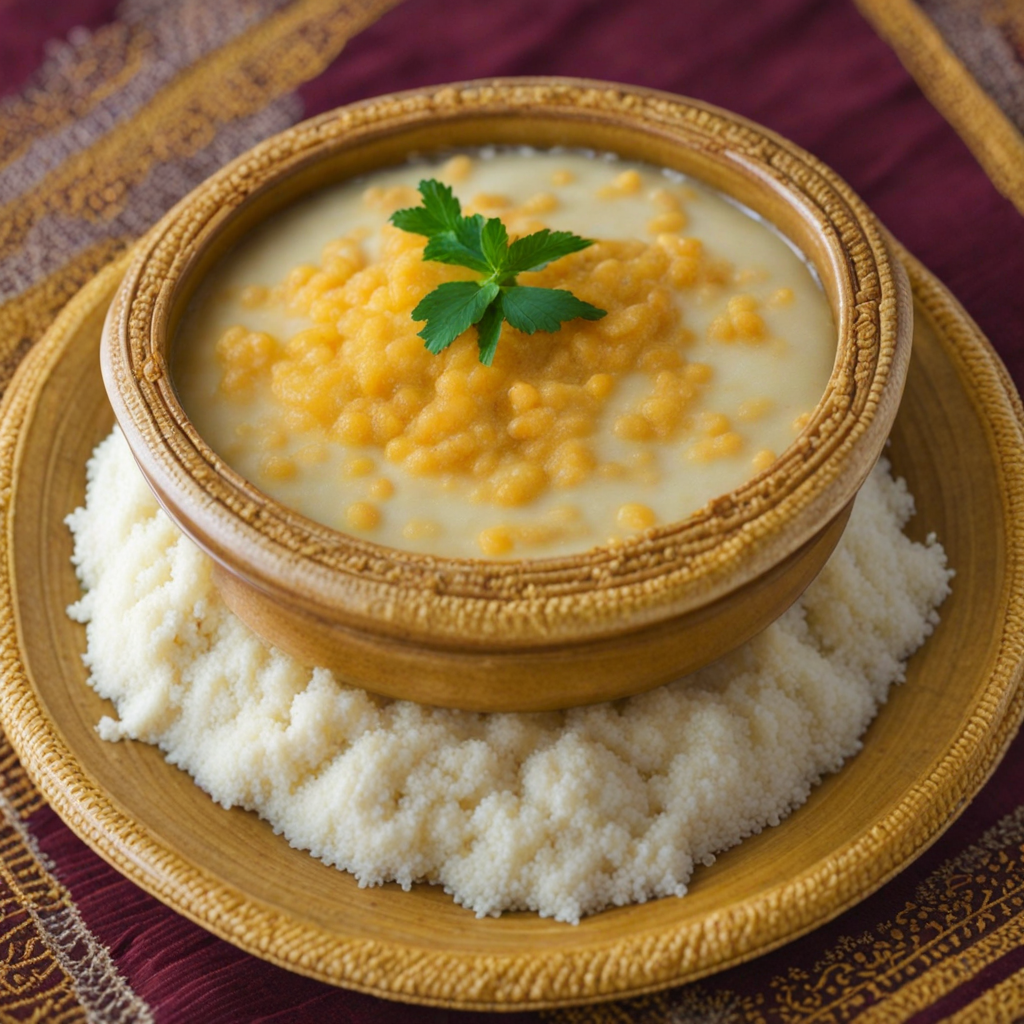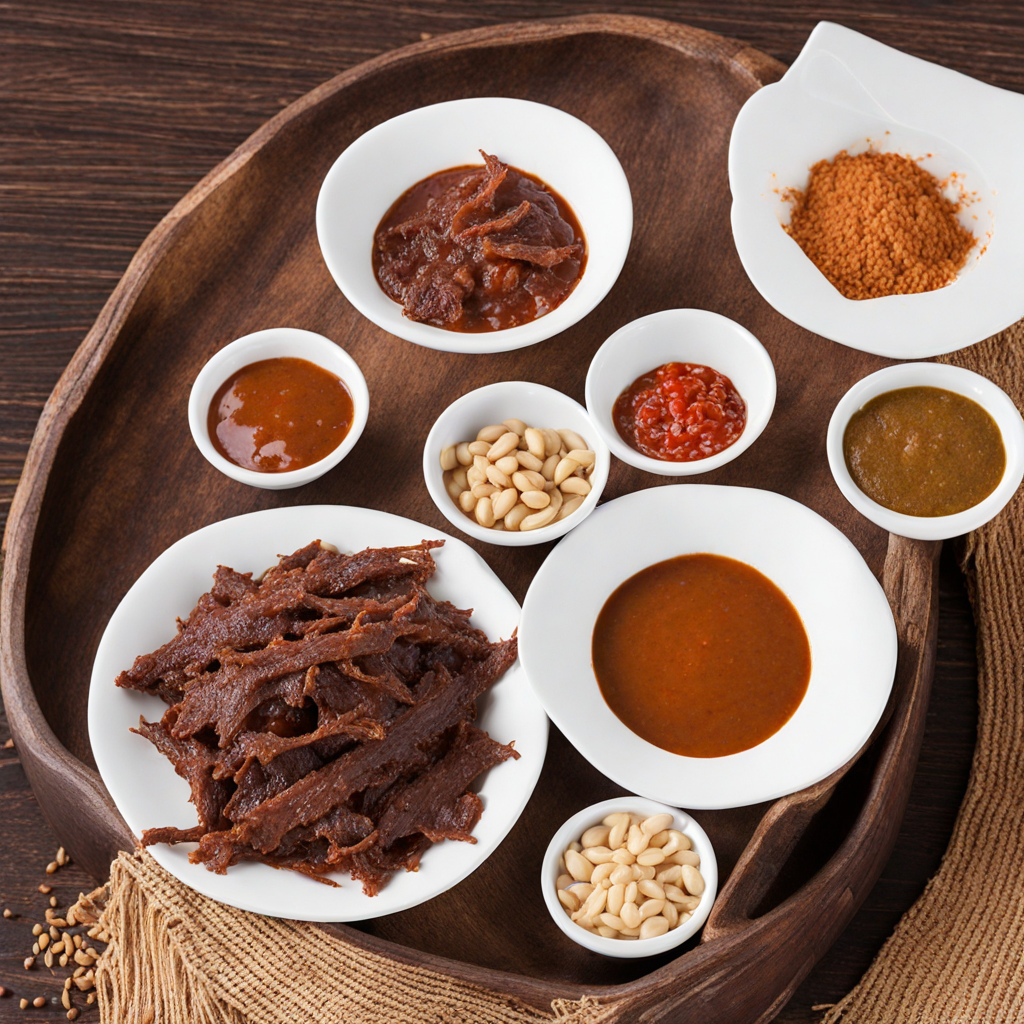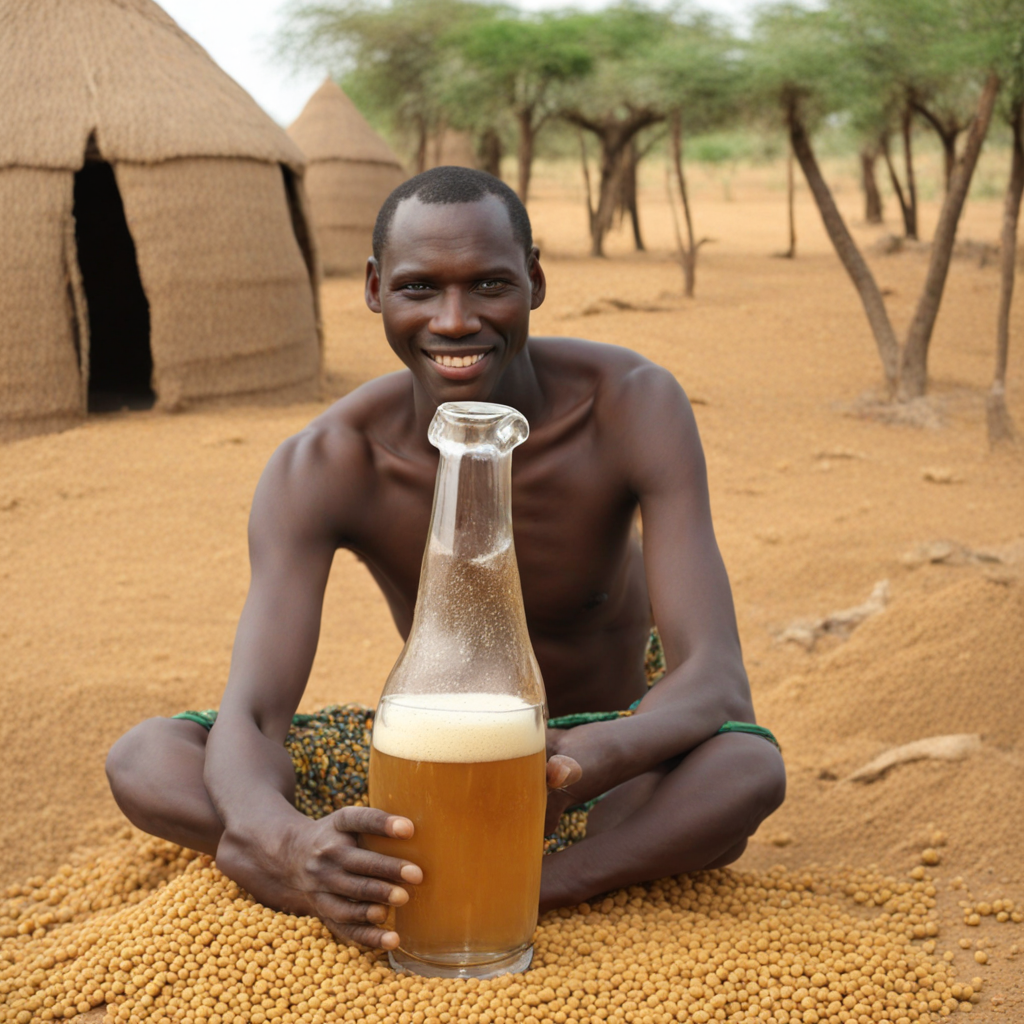Thiakry
Thiakry is a delightful dessert originating from Mali, celebrated for its unique blend of flavors and textures. This traditional dish primarily consists of millet, which is cooked and then combined with creamy yogurt or milk. The millet grains are light and fluffy, offering a nutty undertone that pairs beautifully with the smooth, tangy dairy. The result is a dish that is both satisfying and refreshing, making it a perfect treat for warm weather or festive occasions. What truly sets Thiakry apart is the addition of sweeteners and spices that elevate its taste profile. Typically, sugar or honey is mixed in, along with a sprinkle of cinnamon or vanilla, infusing the dish with warmth and sweetness. Some variations may even include dried fruits or nuts, adding a delightful crunch and a burst of flavor. The combination of these elements creates a harmonious balance, inviting you to savor each spoonful as the tastes meld together in your mouth. Served chilled, Thiakry is often enjoyed as a dessert but can also be a satisfying snack any time of the day. Its creamy texture and sweet, aromatic notes make it a comforting choice that appeals to both adults and children alike. As you explore the culinary landscape of Mali, indulging in Thiakry offers not just a taste of the region’s flavors, but also a glimpse into its rich cultural heritage, making it an irresistible dish to discover.
How It Became This Dish
Thiakry: A Culinary Gem from Mali #### Origins Thiakry, also known as 'tchèkè' in some regions, is a traditional dish that embodies the rich culinary heritage of Mali, a West African nation with a diverse tapestry of cultures and ethnicities. This delightful dish is primarily made from fermented millet, which is a staple grain in many parts of Africa. The origins of thiakry can be traced back to the indigenous communities of the Sahel region, where millet has long been cultivated due to its resilience in arid climates. Millet has been a crucial crop in Mali for centuries, dating back to ancient agricultural practices. It is well-suited to the region's dry conditions and provides a reliable source of nutrition. The fermentation process used in preparing thiakry is reflective of traditional methods of preservation and flavor enhancement that are common in many African cuisines. This technique not only extends the shelf life of the grain but also imparts a unique tangy flavor, making thiakry a distinctive dish. #### Cultural Significance Thiakry is more than just a dish; it is a cultural symbol that resonates with the identity of the Malian people. Traditionally served as a breakfast or snack food, thiakry is often enjoyed with fresh milk or yogurt, highlighting the importance of dairy in West African diets. In many households, it is a communal dish, reflecting the values of sharing and togetherness that are central to Malian culture. The preparation of thiakry is usually a collective effort, often involving multiple generations of women working together. This communal aspect underscores the role of food in fostering social bonds and the transmission of culinary knowledge between generations. Women play a significant role in the agricultural practices surrounding millet cultivation, as well as in the preparation of thiakry, which reinforces their status as custodians of culinary traditions. Thiakry is also associated with various cultural celebrations and rituals. It is commonly served during weddings, festivals, and other significant events, where it signifies hospitality and abundance. Its presence at such gatherings highlights the importance of food in marking social milestones and creating a sense of belonging among community members. #### Development Over Time As Mali has undergone various social, political, and economic changes, so too has the preparation and consumption of thiakry. The dish has evolved while remaining rooted in its traditional practices. In urban areas, where lifestyles have become more fast-paced, the preparation of thiakry has adapted to modern conveniences. While traditional methods involve soaking and fermenting millet over several days, some families now opt for quicker alternatives that still honor the essence of the dish. Moreover, the globalization of food culture has introduced new ingredients and variations to thiakry. While the classic version remains popular, innovative cooks have begun experimenting with flavors, incorporating spices and additional ingredients like fruits, nuts, and sweeteners. These adaptations reflect the dynamic nature of Mali's culinary traditions, showcasing how they can evolve while still paying homage to their roots. In contemporary Mali, thiakry is gaining recognition beyond the borders of the country. As the Malian diaspora grows and spreads around the world, dishes like thiakry are being embraced by international audiences. Food festivals, cultural events, and social media platforms have facilitated a broader appreciation for Malian cuisine, positioning thiakry as a symbol of West African culinary artistry. #### Health Benefits The health benefits of thiakry contribute to its lasting popularity. Millet is a highly nutritious grain, rich in dietary fiber, essential vitamins, and minerals. It is gluten-free, making it an excellent alternative for those with gluten sensitivities. The fermentation process involved in making thiakry also enhances the bioavailability of nutrients, making them easier for the body to absorb. The dish is typically served with milk or yogurt, adding a source of protein and calcium that complements the nutritional profile of millet. This combination makes thiakry a wholesome meal option, suitable for all ages. In a region where food security is a significant concern, the nutritional value of thiakry positions it as a vital component of the Malian diet. #### Thiakry in the Global Context As the interest in global cuisines continues to rise, thiakry is finding its way into the culinary spotlight. Food enthusiasts and chefs around the world are exploring the flavors of West Africa, leading to a renewed interest in traditional dishes like thiakry. This growing curiosity encourages cultural exchange and mutual appreciation of diverse culinary traditions. In international food markets, thiakry and similar millet-based dishes are being touted as alternatives to more mainstream grains, aligning with the global movement towards healthier eating and sustainability. By promoting millet as a nutritious and environmentally friendly crop, thiakry is contributing to a broader conversation about food security and the importance of preserving traditional agricultural practices. #### Conclusion Thiakry embodies the essence of Malian culture through its rich history, nutritional value, and communal significance. From its ancient origins as a staple food to its modern adaptations in a globalized world, thiakry remains a cherished dish that highlights the resilience and creativity of the Malian people. As it continues to evolve and gain recognition on the international stage, thiakry serves as a delicious reminder of the power of food to connect individuals, celebrate heritage, and foster community. In a world that often seems divided, dishes like thiakry remind us of our shared humanity and the universal joy of breaking bread together, transcending borders and cultures through the simple act of sharing a meal. Whether enjoyed at a family gathering in Mali or discovered in a restaurant halfway across the world, thiakry will always be a testament to the rich culinary history and vibrant culture of West Africa.
You may like
Discover local flavors from Mali







